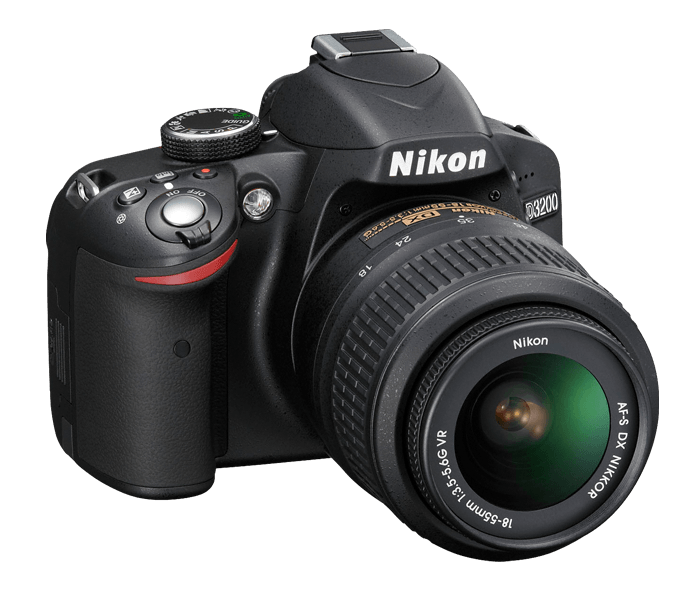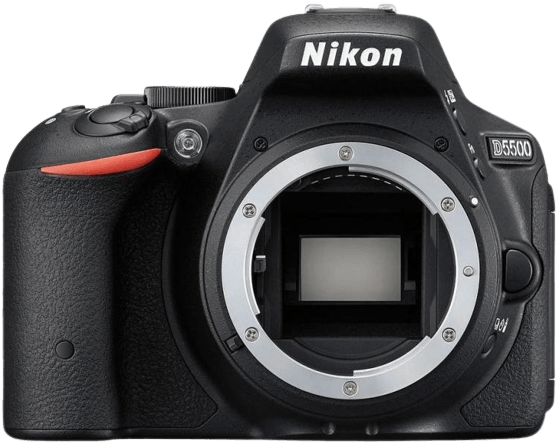Nikon D3200 vs D5500 Comparison
Nikon D3200

Nikon D5500

The Nikon D5500 takes the lead with a score of 61/100, compared to the Nikon D3200‘s 54/100. Both cameras are DSLR models and were released in 2012 and 2015, respectively. They share common specifications, such as the camera type and similar size dimensions.
The winning Nikon D5500 stands out with its lighter weight of 420g, making it more portable than the D3200, which weighs 505g. However, the Nikon D3200 has an advantage in terms of price, as it launched at $699, while the D5500 had a launch price of $900.
Considering the score difference and the specifications, the Nikon D5500 is the better option between the two, offering improved portability with its lighter weight. But for those on a budget, the Nikon D3200 is still a viable choice with its more affordable price.
Nikon D3200 vs D5500 Overview and Optics
The Nikon D5500 wins in the optics comparison with a score of 65/100, while the Nikon D3200 scores slightly lower at 63/100. Both cameras share several specifications, such as a 24.2-megapixel count, CMOS sensor type, APS-C sensor size, Nikon F DX lens mount, and lack of image stabilization.
The D5500’s superiority in optics can be attributed to its faster shooting speed of 5 frames per second and a more advanced Expeed 4 processor. Additionally, the D5500 boasts a higher DXOMARK score for the sensor at 84, compared to the D3200’s score of 81. These factors contribute to the D5500’s ability to capture better quality images, especially in fast-paced situations.
The D3200, on the other hand, has a slower shooting speed of 4 frames per second and an older Expeed 3 processor. Despite these disadvantages, the D3200 still performs well in terms of optics, as evidenced by its close score to the D5500. The difference in performance between the two cameras may not be significant enough to impact the average user’s photography experience.
Taking these factors into account, the Nikon D5500 offers a slight edge in optics due to its faster shooting speed, better processor, and higher DXOMARK score for the sensor. However, the Nikon D3200 remains a strong contender in the optics department, with only a minor difference in performance. Ultimately, both cameras provide users with high-quality optics, making either option a suitable choice depending on individual preferences and budget.
Nikon D3200 vs D5500 Video Performance
The Nikon D5500 outperforms the Nikon D3200 in terms of video capabilities, with a video score of 70 out of 100 compared to the D3200’s 43. Both cameras share some common features, such as Full HD video resolution and maximum video dimensions of 1920 x 1080. However, the D5500 boasts several advantages over the D3200, making it the superior choice for video recording.
One significant advantage of the D5500 is its higher maximum video frame rate of 60fps, compared to the D3200’s 30fps. This allows the D5500 to capture smoother and more detailed footage, particularly in fast-moving scenes or when shooting sports and action events. Additionally, the D5500 includes built-in time-lapse functionality, enabling users to create stunning time-lapse videos without the need for external accessories or software.
The D3200, on the other hand, does not offer any specific advantages over the D5500 in terms of video capabilities. Its lower video score reflects the lack of features and performance compared to the D5500. However, it is worth noting that the D3200 may still be suitable for casual video recording or for those who do not require advanced video features.
Taking these factors into consideration, it is clear that the Nikon D5500 is the better choice for those seeking superior video performance and features. The higher frame rate and time-lapse functionality make it a more versatile and capable camera for video recording. While the Nikon D3200 may be adequate for casual use, the D5500 offers a more comprehensive and advanced set of video capabilities.
Nikon D3200 vs D5500 Features and Benefits
The Nikon D5500 outperforms the Nikon D3200 with a feature score of 59/100, a difference of 18 points compared to the D3200’s score of 41/100. Both cameras share some specifications, such as a 3-inch screen size, no GPS, and no Bluetooth. However, the D5500 surpasses the D3200 in several aspects, making it the superior choice for many photographers.
The winning camera, the Nikon D5500, boasts a larger 3.2-inch screen with a higher resolution of 1,037,000 dots, compared to the D3200’s 921,000 dots. This results in sharper and clearer image previews. Additionally, the D5500 features a touchscreen, allowing users to navigate menus and settings with ease. The camera also has a flip screen, providing flexibility for shooting at various angles. Furthermore, the D5500 comes with built-in WiFi, enabling quick and convenient image transfers to compatible devices.
On the other hand, the Nikon D3200 does not offer any advantages over the D5500 in terms of features. It lacks a touchscreen, flip screen, and WiFi, which limits its usability and convenience compared to its counterpart.
Therefore, the Nikon D5500 is the better option among the two cameras due to its superior features, such as the higher resolution screen, touchscreen, flip screen, and WiFi capabilities. These enhancements provide better image quality, convenience, and versatility for photographers. The Nikon D3200, while still a competent camera, falls short in these areas, making the D5500 a more attractive choice for those looking to upgrade or invest in a new camera.
Nikon D3200 vs D5500 Storage and Battery
The Nikon D5500 wins in the storage and battery category with a score of 35/100, while the Nikon D3200 scores 27/100. Both cameras have a single memory card slot, accepting SD, SDHC, and SDXC cards, and neither offers USB charging. They also share the same battery type, the EN-EL14.
The D5500 has a superior battery life, providing 820 shots per charge compared to the D3200’s 540 shots. This advantage allows for extended use without needing to replace or recharge the battery as frequently.
The D3200 does not have any significant advantages over the D5500 in terms of storage and battery. Its lower score reflects its shorter battery life.
Considering these points, the Nikon D5500 proves to be the better choice for photographers seeking longer battery life and similar storage capabilities. The Nikon D3200, while still a solid option, falls short in comparison due to its shorter battery life.
Nikon D3200 vs D5500 – Our Verdict
Are you still undecided about which camera is right for you? Have a look at these popular comparisons that feature the Nikon D3200 or the Nikon D5500:

